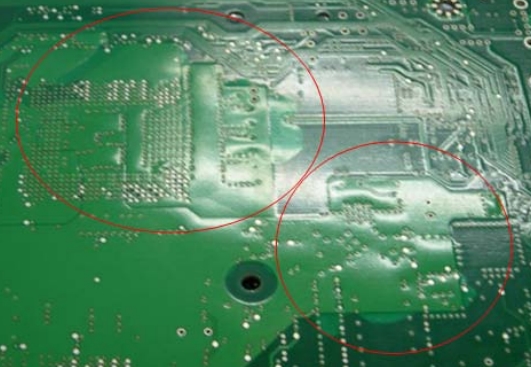Safe & effective PCB drying accomplished without damaging high temperatures using ultra low humidity drying enclosures to produce an atmosphere containing less than 0.05g/m3 water vapor.
Manage moisture damage in PCBs
Safe & effective PCB drying accomplished without damaging high temperatures using ultra low humidity drying enclosures to produce an atmosphere containing less than 0.05g/m3 water vapor.
Guidelines for the proper stocking and moisture protection of electronic components can be found in IPC standards (IPC-J-STD-033C). Because there were no published standards for storage and moisture protection for printed circuit boards until 2010, (IPC 1601) they were generally overlooked. But with the correct stocking control and the use of professional drying methods, considerable advantages can be gained: Coated printed boards will remain solderable for a much longer time and damage during reflow due to moisture can be eliminated.
The ‘IPC-1601 printed board handling and storage guidelines’ states that “ If process controls are ineffective, and printed boards have absorbed excessive moisture, baking is the most practical remedy.” It goes on to state, “However, baking not only increases cost and cycle time, it can also degrade solderability of the printed board which requires extra handling and increases the likelihood of handling damage or contamination. In general, both the printed board fabricator and the user should strive to avoid baking by practicing effective handling, packaging, storage, and process controls…”
The document also states “Baking is NOT recommended for OSP coatings, as it deteriorates the OSP finish. If baking is deemed necessary, the use of the lowest possible temperature and dwell time is suggested as a starting point.”
Organic solderability preservative (OSP) coatings are among the leading surface finish options in lead free soldering because they provide an attractive combination of solderability, ease of processing and low cost. Compared to alternatives, however, they tend to be the most prone to oxidation. The cause for this lies in the pure copper surface protected only by the OSP coating layer. Under normal climatic conditions in a manufacturing process, after only a few minutes there will be a separation of a water film at the surface (3-5 atom layers). This then starts a diffusion process which leads to a vapor pressure balance through the OSP coat.
Baking also accelerates solid diffusion between metals, and increases intermetallic growth. This can lead to a “weak knee” or other solderability issues if the intermetallic layer reaches the surface and oxidizes.
The packaging quality of PCBs as received from the manufacturers can also have a significant effect. Often a simple foil bag or an ESD bag is used instead of a Moisture Barrier Bag (MBB). With such packing coated boards are likely to arrive having already absorbed moisture, and if stored like this they will be useless after a short time. Adsorption process desiccant drying cabinets can be used for the careful drying of these and other moisture sensitive devices.

Safe and effective PCB drying can be accomplished without damaging high temperatures using ultra low humidity drying enclosures that produce an atmosphere containing less than 0.05g/m3 water vapor. This creates a ‘moisture vacuum’ that releases the previously absorbed moisture from the PCBs while protecting against oxidation and inter-metallic growth. These enclosures are also suitable for safe storage of PCBs for unlimited times, per IPC/JEDEC standards. Further oxidation is stopped by the removal of the electrolytic water molecules. Because these storage systems can work at room temperature, boards need not be removed until ready for processing. Low temperature heat can be used to accelerate the drying time. (See reference conditions for drying below).
Dried and stored in this way the OSP coated printed board is ideally protected and can be used over long periods of time with steady wetting characteristics.
Dry storage is also necessary for a less critical coating; e.g. in the beginning the wettability of the coating of a hot air tin-plated printed board is better than of OSP coated printed boards. Here an oxide film forms on the surface under the influence of moisture influence which can also limit good wetting and solderability. This problem can also be averted with the help of a dry cabinet, enabling the retention of a constant wettability for a much longer period of time.
Reference Conditions for Drying PCB’s Without Mounted Components
Floor life begins counting at time =0 after drying

The recommended drying times were determined in accordance with IPC-STANDARD JSTD 033C for drying of components. Because distinction in accordance with MSL-Level from the PCB-makers is not yet included in the standard, measures were carried out on test boards. These showed, that the MSL-Level 3 of components is comparable with the behavior of PCBs.
Exceptions are for PCB’s with numerous surface layers and copper division inside, the thickness of which must be multiplied by a factor 2 beforehand. Because these layers can have a strong influence on the speed of dehumidification, these specifications should be looked upon as guidelines. Because of the complexity of influences, an exact judgement is only possible with a PCB-specific dehumidification test.
